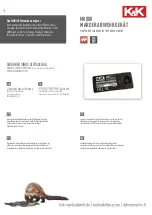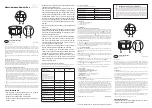
ARMS Hardware Manual
Installation
2.4. Attaching the Payload to the Stage
Aerotech recommends that customers use a representative payload during start-up to prevent accidental
damage to the stage and the payload. Proceed with the electrical installation and test the motion control
system in accordance with the system documentation. Document all results for future reference. For
information on electrical installation refer to
and the documentation delivered with the stage.
N O T E :
If your ARMS was purchased with Aerotech controls, it might have been tuned with a
representative payload based on the information provided at the time of order. If the ARMS is started up
without a payload, the servo gains provided by Aerotech with the shipment may not be appropriate and
servo instability can occur. Refer to the controller help file for tuning assistance.
The payload must be flat, rigid, and comparable to the stage in quality to maintain optimum performance.
N O T E :
For valid system performance, the mounting interface should be flat within 5 µm (0.0002 in).
Applied loads should be symmetrically distributed whenever possible (i.e., the payload should be centered
on the stage table and the entire stage should be centered on the support structure).
For a cantilevered load, first determine if it is an Axial or a Radial cantilever system. Measure the cantilever
length, then find the corresponding load value from
.
The
Axial
curve assumes a horizontal stage orientation with the payload offset extending upwards.
The
Radial
curve is for situations where the stage is mounted on its side and the offset load extends
outwards.
Refer to
for clarification on Axial or a Radial orientations.
Figure 2-12:
Load Orientation
www.aerotech.com
Chapter 2
27
















































